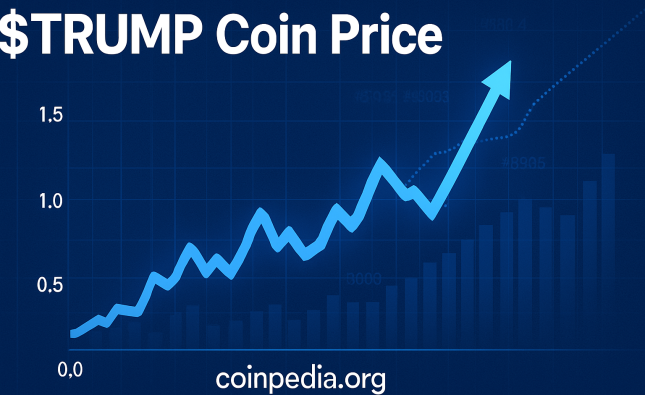
Investment Strategies for a Volatile Market

Investing in a volatile market can be daunting, but it also presents opportunities for substantial returns if approached with the right strategies. Volatility, characterized by rapid and unpredictable price movements, can stem from various factors including economic events, political instability, or sudden shifts in market sentiment. This article explores effective investment strategies for navigating a volatile market, helping investors manage risks and potentially capitalize on market fluctuations.
Understanding Market Volatility
Market volatility refers to the frequency and magnitude of price changes in the market. High volatility means significant price swings in a short period, while low volatility indicates more stable prices. Volatility can be measured using indicators such as the VIX (Volatility Index), which gauges market expectations of near-term volatility.
Causes of Volatility
- Economic Indicators: Reports on GDP, unemployment rates, and inflation can influence investor confidence and market trends.
- Geopolitical Events: Political instability, wars, and elections can create uncertainty and lead to market fluctuations.
- Market Sentiment: Changes in investor sentiment, often driven by news and social media, can lead to rapid buying or selling.
Strategies for Volatile Markets
- Diversification
Diversification involves spreading investments across various asset classes, sectors, and geographies to reduce risk. In a volatile market, diversification helps mitigate the impact of a downturn in any single investment. A well-diversified portfolio might include stocks, bonds, real estate, and commodities.
- Dollar-Cost Averaging (DCA)
Dollar-Cost Averaging involves investing a fixed amount of money at regular intervals, regardless of market conditions. This strategy reduces the risk of making large investments at inopportune times and can smooth out the effects of market volatility over time.
- Hedging
Hedging involves using financial instruments, such as options and futures, to offset potential losses in an investment portfolio. For instance, purchasing put options can protect against declines in stock prices.
- Safe Haven Assets
Investing in safe haven assets like gold, government bonds, or stable currencies can provide a buffer against market volatility. These assets typically retain or increase in value during periods of market turbulence.
- Active Management
Active management involves closely monitoring the market and making timely investment decisions to capitalize on short-term opportunities. This approach requires a deep understanding of market trends and the ability to react swiftly to changes.
Comparative Analysis of Investment Strategies
- Risk Management
| Strategy | Risk Level | Pros | Cons |
| Diversification | Low | Reduces unsystematic risk | May limit potential high returns |
| Dollar-Cost Averaging | Moderate | Smoothens out investment costs | Does not eliminate market risk |
| Hedging | High | Protects against specific risks | Can be complex and costly |
| Safe Haven Assets | Low | Provides stability in turbulent times | May underperform in a stable or bullish market |
| Active Management | High | Potential for high returns | Requires expertise and can be time-consuming and costly |
- Performance in Different Market Conditions
| Market Condition | Diversification | Dollar-Cost Averaging | Hedging | Safe Haven Assets | Active Management |
| Bull Market | Moderate | Moderate | High cost | Underperforms | High |
| Bear Market | High | Moderate | Effective | Outperforms | Moderate |
| Sideways Market | High | Moderate | Moderate | Moderate | Moderate |
| Highly Volatile Market | High | Moderate | Effective | Effective | High |
Case Studies
- Diversification during the 2008 Financial Crisis
During the 2008 financial crisis, diversified portfolios that included bonds, gold, and international stocks fared better than those heavily weighted in U.S. equities alone. While the S&P 500 dropped by approximately 38%, gold prices rose, and government bonds provided stable returns, cushioning the overall portfolio performance.
- Dollar-Cost Averaging in the 2020 COVID-19 Pandemic
Investors practicing Dollar-Cost Averaging during the 2020 COVID-19 pandemic saw their average purchase price lower than those who made lump-sum investments. The strategy allowed investors to buy more shares during market dips, enhancing returns as markets recovered.
- Hedging Techniques in Tech Stocks
Tech investors often use hedging strategies, such as buying put options, to protect against sharp declines in stock prices. During periods of high volatility, such as regulatory crackdowns on tech companies, hedging helped investors limit losses while maintaining their positions.
Implementing Strategies in a Volatile Market
- Setting Clear Investment Goals
Investors should define their financial goals, risk tolerance, and investment horizon before implementing any strategy. This helps in choosing the most appropriate approach and maintaining discipline during market swings.
- Regular Portfolio Review
Regularly reviewing and rebalancing the portfolio ensures it remains aligned with investment goals and risk tolerance. In a volatile market, this might involve adjusting asset allocations to maintain desired levels of diversification and risk.
- Staying Informed
Keeping abreast of market developments, economic indicators, and geopolitical events can help investors make informed decisions. Subscribing to financial news, attending webinars, and consulting with financial advisors are effective ways to stay informed.
Psychological Aspects of Investing in Volatile Markets
Investing in volatile markets can be emotionally challenging. Fear and greed often drive investor behavior, leading to impulsive decisions. To counteract this, investors should:
- Maintain a Long-Term Perspective: Focus on long-term financial goals rather than short-term market movements.
- Avoid Panic Selling: Reacting impulsively to market downturns can lock in losses and miss out on potential recoveries.
- Adopt a Disciplined Approach: Stick to a well-defined investment strategy and avoid making decisions based on noise.
Analysis Table
| Strategy | Description | Pros | Cons |
| Diversification | Spread investments across different assets and sectors | Reduces risk, provides stability | Limits potential high returns |
| Dollar-Cost Averaging | Invest a fixed amount regularly regardless of market conditions | Smoothens investment costs, reduces timing risk | Does not eliminate market risk |
| Hedging | Use financial instruments to offset potential losses | Protects against specific risks, can be highly effective in volatile markets | Can be complex and expensive |
| Safe Haven Assets | Invest in assets that retain or increase value during market downturns | Provides stability, often performs well during market turbulence | May underperform in stable or bullish markets |
| Active Management | Make investment decisions based on market trends and conditions | Potential for high returns, can capitalize on short-term opportunities | Requires expertise, time-consuming, higher costs |
Comparative Table
| Market Condition | Diversification | Dollar-Cost Averaging | Hedging | Safe Haven Assets | Active Management |
| Bull Market | Moderate returns | Moderate returns | High cost, low necessity | Underperforms | High returns |
| Bear Market | Reduced losses | Moderate returns | High effectiveness | Outperforms | Moderate returns |
| Sideways Market | Steady performance | Moderate returns | Moderate effectiveness | Steady performance | Moderate returns |
| Highly Volatile Market | Stable performance | Smooth returns | High effectiveness | High effectiveness | High returns, high risk |
Conclusion
Navigating a volatile market requires a combination of strategic planning, risk management, and psychological resilience. Diversification, Dollar-Cost Averaging, hedging, safe haven assets, and active management are among the effective strategies investors can employ. Each strategy has its pros and cons, and their effectiveness can vary based on market conditions and individual investor circumstances. By setting clear goals, regularly reviewing portfolios, and staying informed, investors can better manage the challenges of a volatile market and potentially achieve favorable outcomes.










